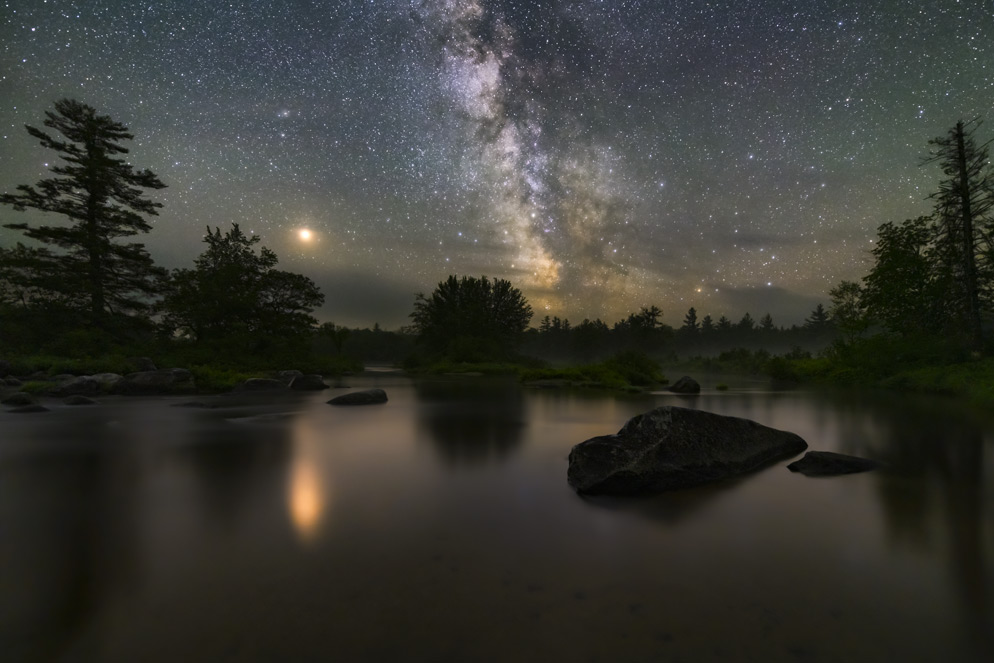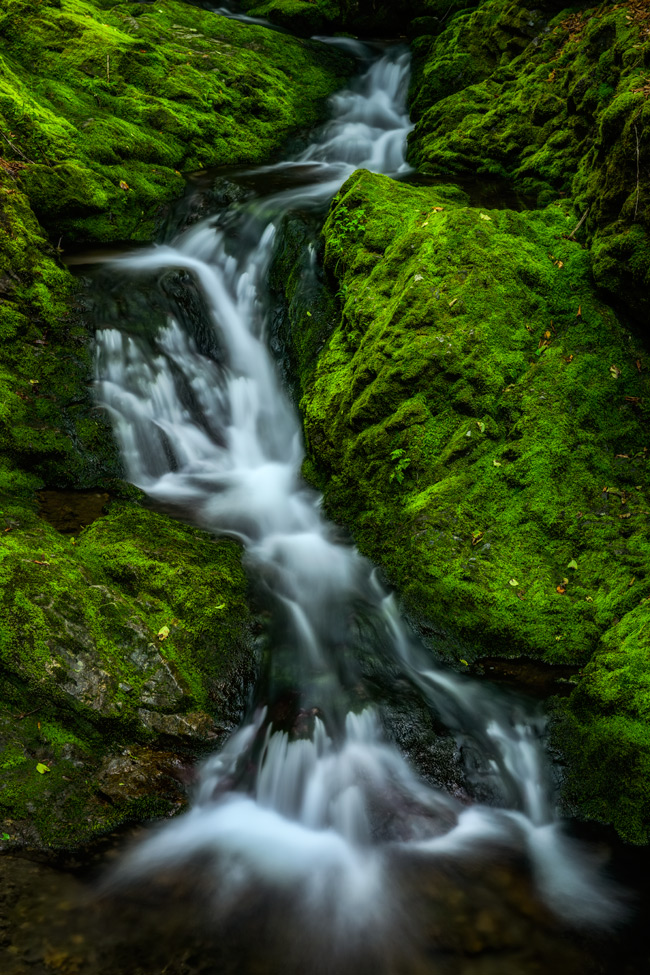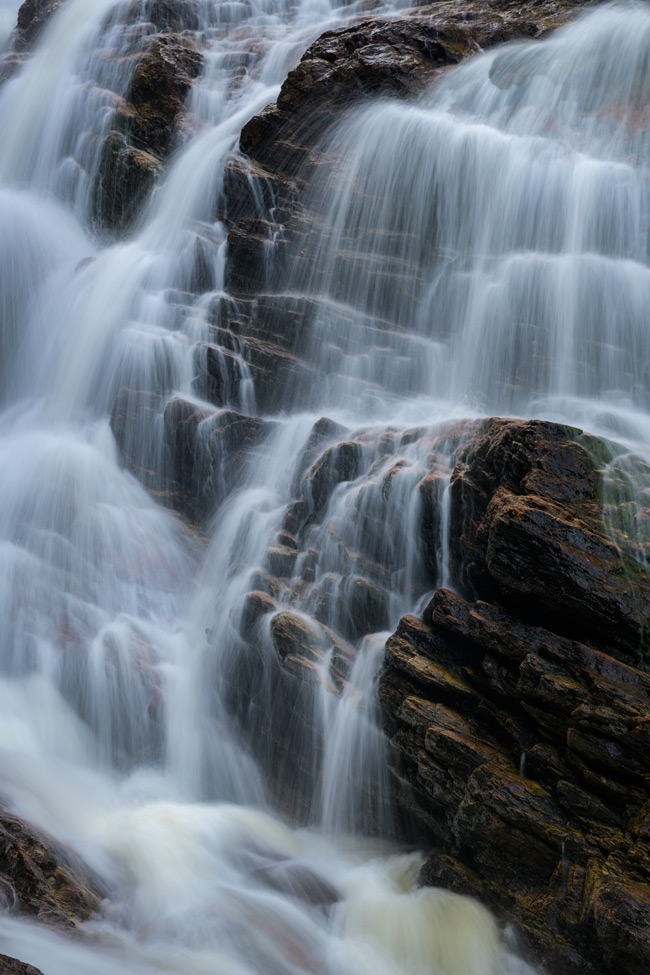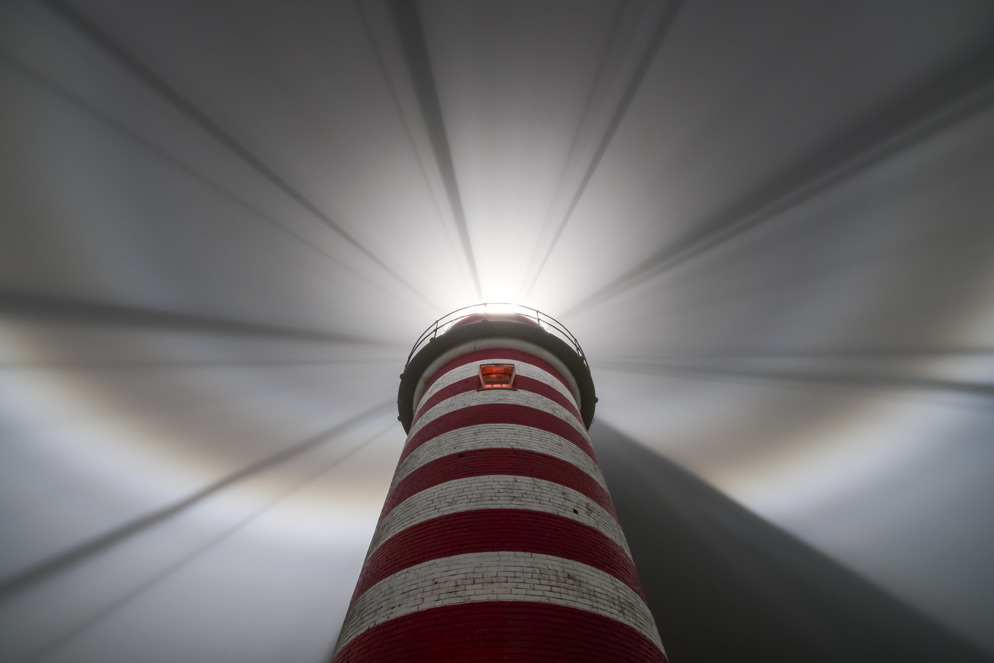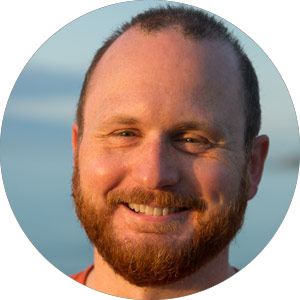Z 7: 24/7
Adam shot this photo at Dickson Falls in Fundy National Park in New Brunswick, Canada, using the Mount Adapter FTZ and his AF-S 24-70mm NIKKOR on the Z 7. "I did a bit of comparison testing of the lens and adapter combo, and there was no noticeable difference—it was like I was using a D850 that was a smaller body." Z 7, Mount Adapter FTZ, AF-S NIKKOR 24-70mm f/2.8G ED, 8 seconds, f/11, ISO 200, manual exposure, Matrix metering.
A waterfall in Walton Glen Gorge, New Brunswick. "I hiked about five or six miles to photograph waterfalls over a ten-day period, and it was really nice having the Z 7 because the weight-saving of the smaller body was noticeable." Z 7, Mount Adapter FTZ, AF-S NIKKOR 24-70mm f/2.8G ED, 1/2 second, f/11, ISO 32, manual exposure, 3D Color Matrix metering.
The first time I looked through the EVF, it seemed very much like an optical viewfinder. It was so good I almost didn't think about it.
There are a lot of photographers who will tell you they're on the job 24/7...or at least it feels like they are. We don't know if landscape and night-sky shooter Adam Woodworth says that, but he could without venturing into exaggeration territory. All seasons in all weather at all hours, Adam's out there pursuing pictures over rough terrain and long distances.
So he was eagerly anticipating the Z 7, Nikon's first full-frame mirrorless, for the smaller size and the weight-saving factors of a mirrorless body.
He got what he expected—and a lot more.
"For my daytime landscapes, I look at the LCD quite a bit in live view mode," he says, "but if it's bright and sunny, it's sometimes hard to see the composition. On my D850 I'd use the optical viewfinder, and it's the same with the Z 7. The EVF is basically like a hooded LCD. There's no sunlight hitting it, so I can put my eye up to it and see everything, but with more detail. I can see better, focus closer and change the brightness, and I can see all the menus and camera settings in the EVF as well."
Around midnight at a Maine lighthouse. "It's a 1000-watt bulb, surprisingly small and not that much wattage, but the [old] Fresnel lens focuses the light really well," Adam says. "The light blinks on for a second or two, off for eight or nine, then repeats all night, so when you're standing there it's actually dark most of the time." Metal dividers in the window pane array break up the light, causing the "wagon wheel" shadows. The challenge was the dense fog: "You could see moisture droplets in the air, so it was like being in a light rain. I had to clean the lens between shots." Z 7, Mount Adapter FTZ, AF-S NIKKOR 14-24mm f/2.8G ED, 2 minutes, f/5.6, ISO 200, manual exposure, Matrix metering.
The EVF is also a benefit for his night photography. Not in the taking of the pictures because in most of the places Adam shoots it's so dark he can't see anything through the camera. "I can barely see in front of my eyes," he says. "I have to take test shots of five or ten seconds, each at really high ISOs, to see what I've got for my composition, and then hopefully in the dark I can move the camera and recompose and try again." It's in playback mode that the Z 7's EVF will be a big help. "I can zoom in to check focus and get a brighter and more detailed view."
Adam also appreciated the ability to customize the Z 7 to the way he works, especially when he's shooting in low or no light.
"That was great," he says. "I was able to change the menu on the touchscreen to have the features I needed most. I put things like exposure delay mode and long exposure noise reduction on the screen for quick access."
A feature that he didn't use all that much initially, but knows he's going to appreciate is the Z 7's built-in VR (Vibration Reduction) image stabilization. "I tested it briefly and noticed the difference. I'm going to be using it for some wildlife photography."
He'll be able to explore everything about the Z 7 before too long—when we spoke he'd already ordered...well, everything. "The camera, the lens mount adapter and the three lenses. And I'm looking forward to the 14-30mm f/4 that Nikon has planned for next year."
Night images may be a specialty for Adam, but he's not in the dark about the future of his photography.
Mars and the Milky Way on the Penobscot River in a 12-image composite. All the images taken with the Z 7, Mount Adapter FTZ and an AF-S NIKKOR 14-24mm f/2.8G ED at 14mm and f/2.8. The sky is a stack of ten shots, each a ten-second exposure at ISO 6400. The foreground is two shots, both at ISO 1600; one is from a 16-minute exposure; the second, the reflection of Mars on the river, is from an 8-minute exposure. Adam used the Starry Landscape Stacker program to make the composite. (You can learn how to do shots like this at one of Adam's workshops...just sayin'.)

